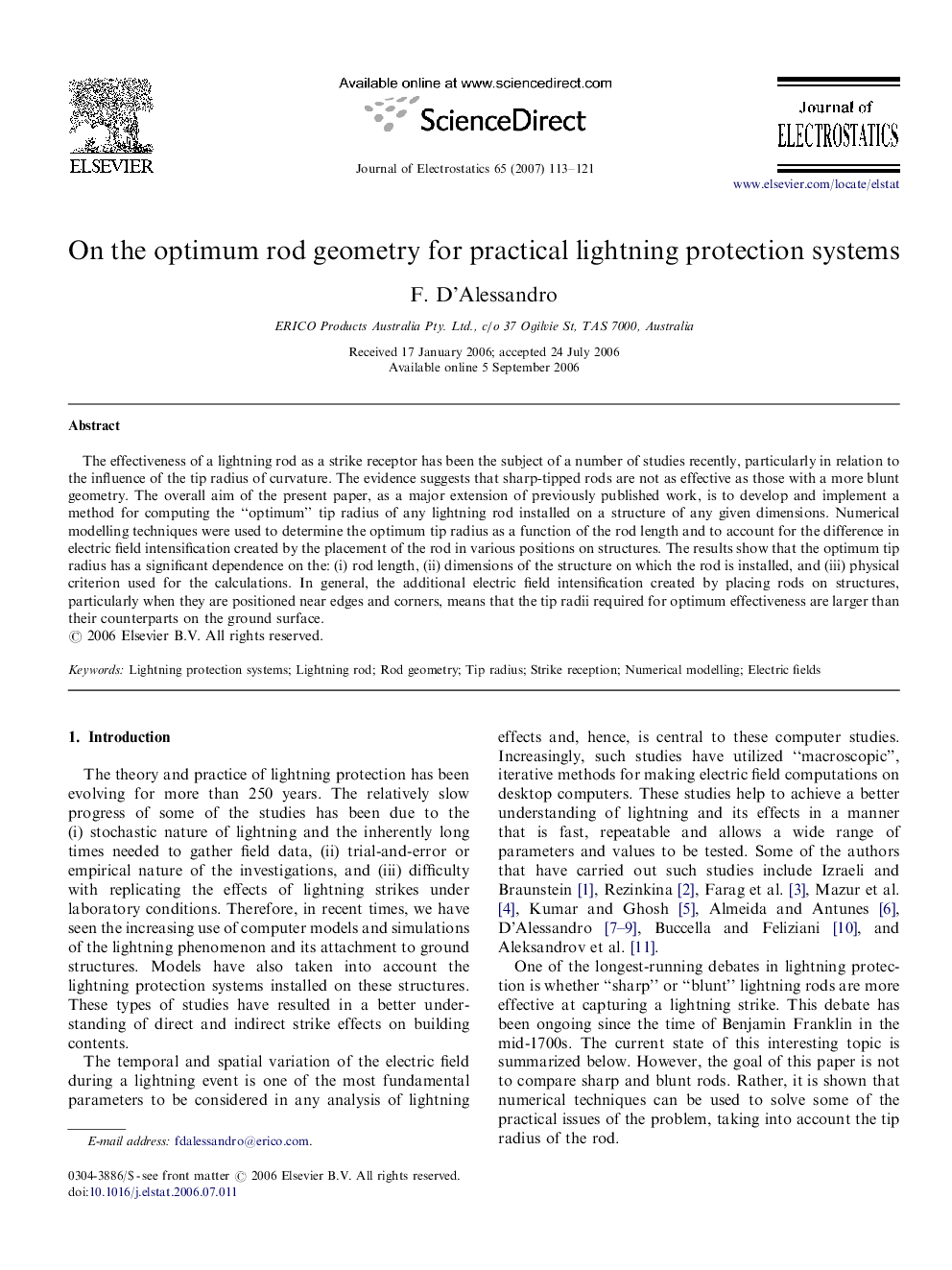| Article ID | Journal | Published Year | Pages | File Type |
|---|---|---|---|---|
| 725947 | Journal of Electrostatics | 2007 | 9 Pages |
The effectiveness of a lightning rod as a strike receptor has been the subject of a number of studies recently, particularly in relation to the influence of the tip radius of curvature. The evidence suggests that sharp-tipped rods are not as effective as those with a more blunt geometry. The overall aim of the present paper, as a major extension of previously published work, is to develop and implement a method for computing the “optimum” tip radius of any lightning rod installed on a structure of any given dimensions. Numerical modelling techniques were used to determine the optimum tip radius as a function of the rod length and to account for the difference in electric field intensification created by the placement of the rod in various positions on structures. The results show that the optimum tip radius has a significant dependence on the: (i) rod length, (ii) dimensions of the structure on which the rod is installed, and (iii) physical criterion used for the calculations. In general, the additional electric field intensification created by placing rods on structures, particularly when they are positioned near edges and corners, means that the tip radii required for optimum effectiveness are larger than their counterparts on the ground surface.
